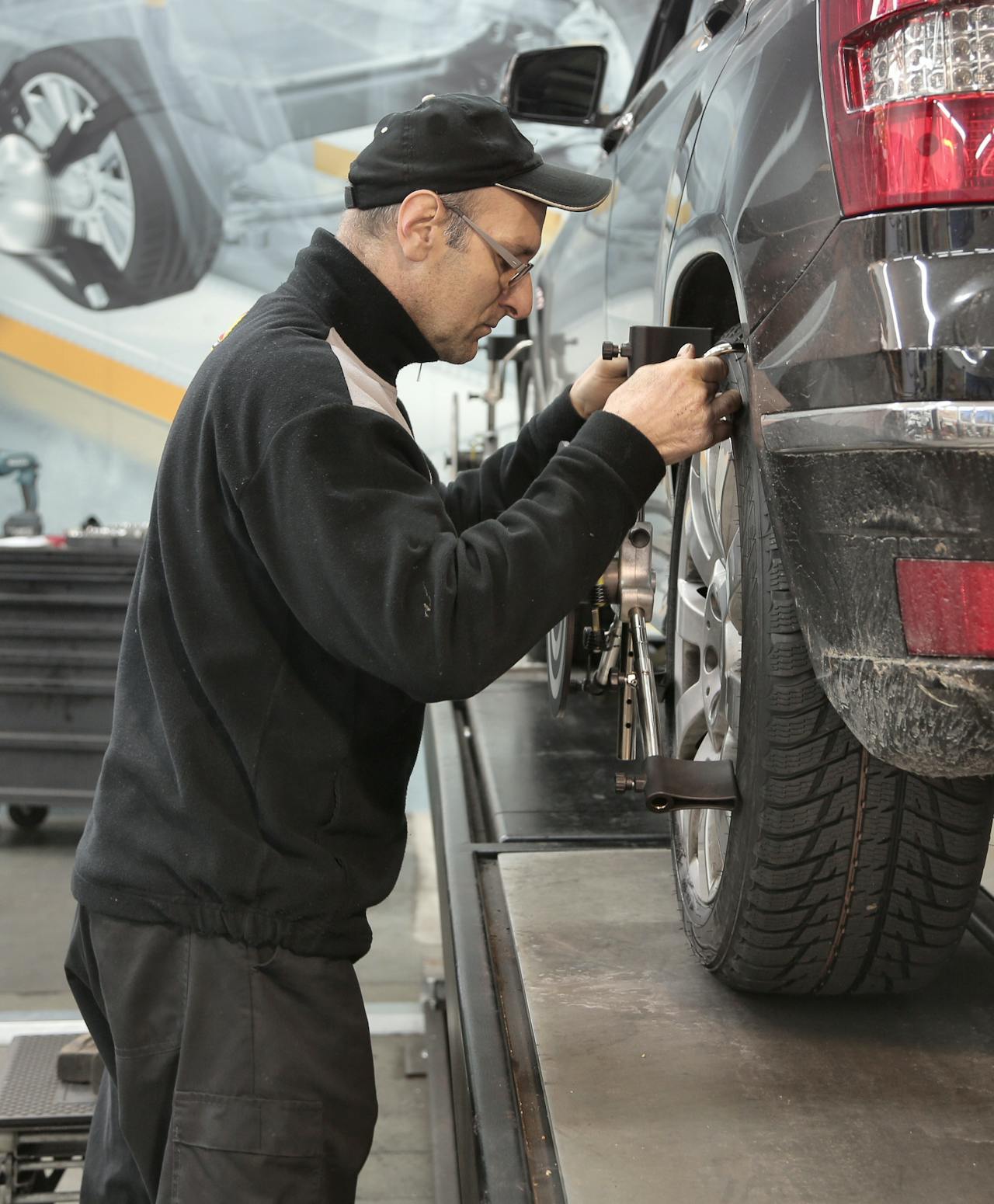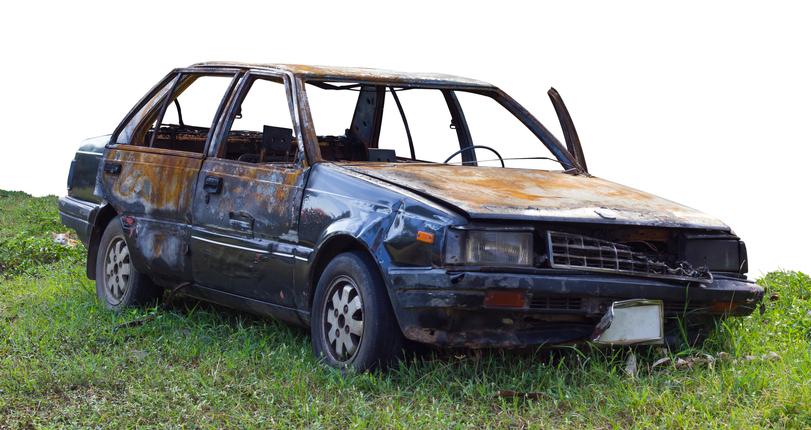
Tires are a key part of your vehicle, affecting safety and performance. However, deciding when it’s time to replace them can be difficult. To maintain your tires, it is important to know how long they last, how to spot signs of wear, and how to keep them in top condition.
In this guide, we’ll walk you through everything you need to know about tire replacement, including typical tire lifespan, maintenance tips, and how to know when it’s time for new tires.
What’s the Average Lifespan of a Tire?
Most tires last 50,000 to 75,000 miles or approximately six to ten years, depending on driving conditions and tire quality. For drivers in need of tire replacement in YYC, this timeline can vary based on local road conditions and weather, so regular checks are essential. Tire manufacturers often recommend replacing tires after six years, even if the tread looks fine, as rubber degrades over time.
Tip: Check the sidewall of your tires for the manufacturing date. Tires older than six years should be inspected by a professional, regardless of appearance.
Key Indicators That Your Tires Need Replacing
Knowing when your tires need replacing can prevent accidents and improve performance. Here are the main signs to watch for:
- Worn Tread
Federal law requires a minimum tread depth of 2/32 of an inch. Use the penny test—if Lincoln’s head is visible when you place a penny upside-down in the tread grooves, it’s time for new tires.
- Sidewall Damage
Cracks, gouges, or bulges indicate potential structural failures.
- Persistent Vibration
Excessive vibration while driving could point to tire imbalances or internal damage.
- Age
Even if tread depth is acceptable, tires older than 10 years should be replaced.
Why Are Tires Bad for the Environment?
Old or worn tires don’t just affect driving safety—they also have a notable environmental impact. As tires wear down, they release tiny particles of rubber and other materials, contributing to microplastic pollution.
These particles often end up in waterways and soil, harming ecosystems. Properly disposing of old tires and replacing them promptly can help reduce this impact. Moreover, exploring environmentally friendly tire options can make a significant difference in limiting pollution.
Factors That Affect Tire Lifespan
1. Driving Habits
Aggressive drivers who brake hard, corner sharply, or drive at high speeds put more strain on their tires.
2. Climate
Extreme weather conditions—hot summers or freezing winters—accelerate tire wear. UV rays can weaken the rubber, and freezing temperatures can cause cracks.
3. Road Conditions
Rough roads with potholes or debris can damage tires faster than smooth highways.
4. Maintenance
Neglecting basic tire care, like maintaining proper inflation and alignment, shortens their lifespan significantly.
How Tire Maintenance Can Extend Lifespan
Prolong your tire’s lifespan with these simple practices:
- Routine Inspections
Inspect your tires for visible signs of wear and damage. Catching issues early can prevent costly replacements.
- Proper Inflation
Underinflated tires cause uneven wear and increase rolling resistance, leading to poor fuel efficiency. Overinflated tires are prone to blowouts. Check tire pressure monthly and adjust to the manufacturer’s recommendations.
- Regular Rotation
Rotate your tires every 5,000 to 7,500 miles to ensure even tread wear. Your vehicle’s manual will provide exact guidelines for rotation patterns.
- Wheel Alignment
Misaligned wheels cause uneven tire wear, shortening lifespan. An annual alignment check can save you from premature replacements.
- Balancing
Unbalanced tires lead to vibrations, causing faster wear. Get your tires balanced during every rotation.
The Importance of Seasonal Tire Care
If you use different tires for summer and winter, managing their condition is essential for safe driving.
- Winter Tires: These tires provide optimal traction in icy conditions but wear faster on dry roads. Replace them when the tread depth drops below 5/32 of an inch.
- Summer Tires: Designed for warm weather, these should be replaced when tread depth hits the 2/32 of an inch threshold.
Storage Tip: Store seasonal tires in a cool, dry place away from direct sunlight to reduce wear and degradation.
Risks of Delaying Tire Replacement
Failing to replace worn or old tires increases the likelihood of:
- Reduced Traction
Bald tires lose grip, especially on wet roads, leading to skidding or hydroplaning.
- Increased Blowout Risk
Worn tires are more likely to fail under pressure or high speeds.
- Higher Fuel Costs
Uneven or worn tires increase resistance, reducing fuel efficiency.
Driving on compromised tires isn’t worth the risk—your safety depends on having tires in good condition.
How to Choose the Right Replacement Tires
When the time comes to replace your tires, consider these factors:
- Type of Vehicle
Ensure the tires match your car’s specifications. Sedans, trucks, and SUVs all require different tire types.
- Driving Conditions
If you often drive in snow or rain, choose tires designed for these conditions, like all-season or winter options.
- Budget
While premium tires cost more upfront, they often last longer and perform better.
Cost-Effective Tire Replacement Tips
Tire replacement doesn’t have to break the bank. Here are some ways to save:
- Shop During Sales. Many retailers offer discounts during spring and fall.
- Buy in Sets. Replacing all four tires at once often comes with package deals.
- Rebate Programs. Many manufacturers provide rebates on new tires.
- Compare Brands. Don’t just go for the cheapest option—invest in a reliable brand to save money in the long run.
Quick Reference: Tire Replacement Checklist
Here’s a handy summary for tire care and replacement:
- Inspect tread depth with a penny test.
- Check sidewalls for cracks, bulges, or other damage.
- Rotate tires every 5,000–7,500 miles.
- Keep tires inflated to recommended levels.
- Replace tires every 6–10 years or earlier if worn.
Conclusion
Replacing tires on time is crucial for safety, performance, and efficiency. Regular maintenance, attention to signs of wear, and knowing your driving conditions will help you get the most from your tires. When in doubt, consult a tire specialist to ensure you’re driving on safe, r















